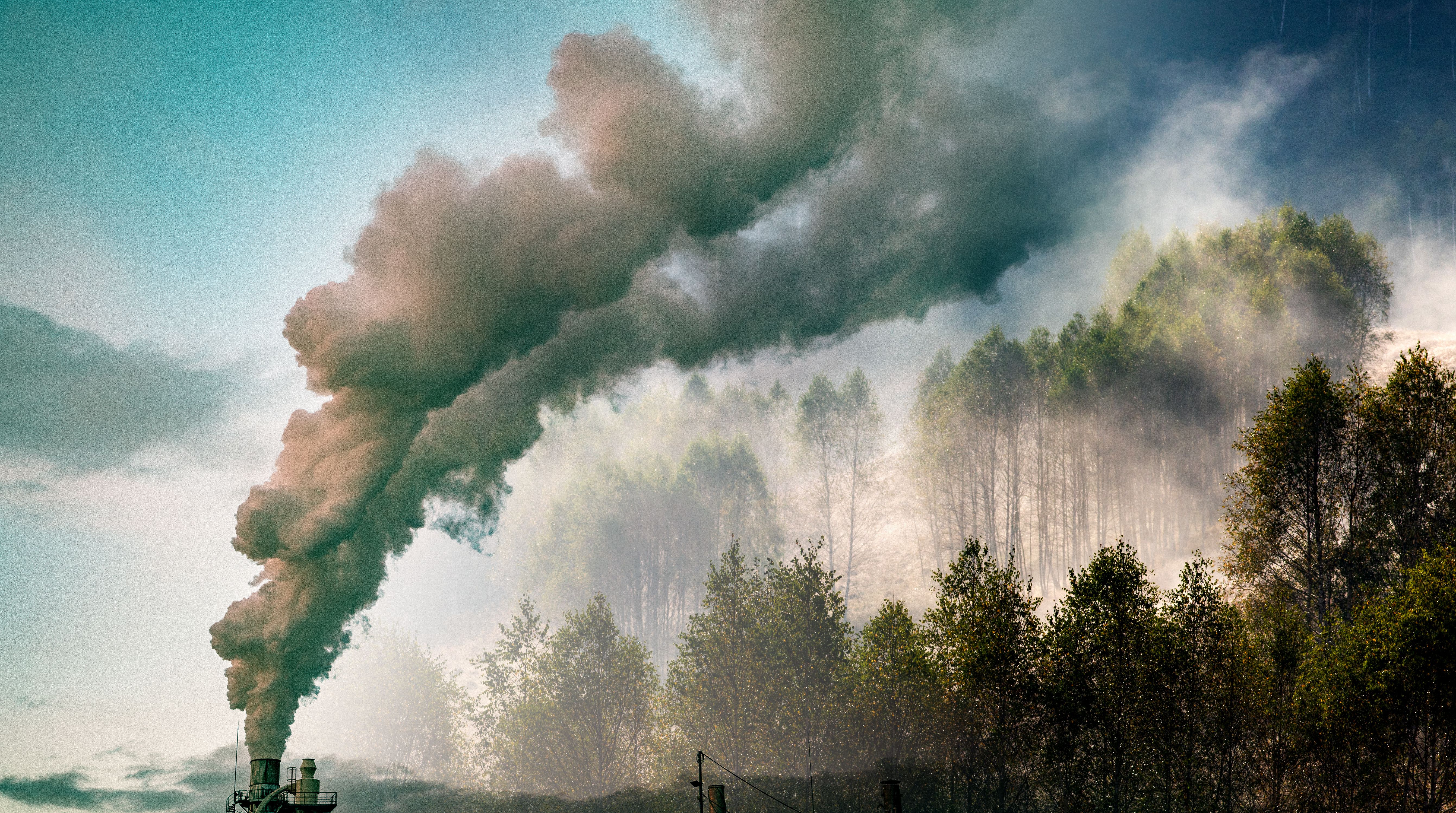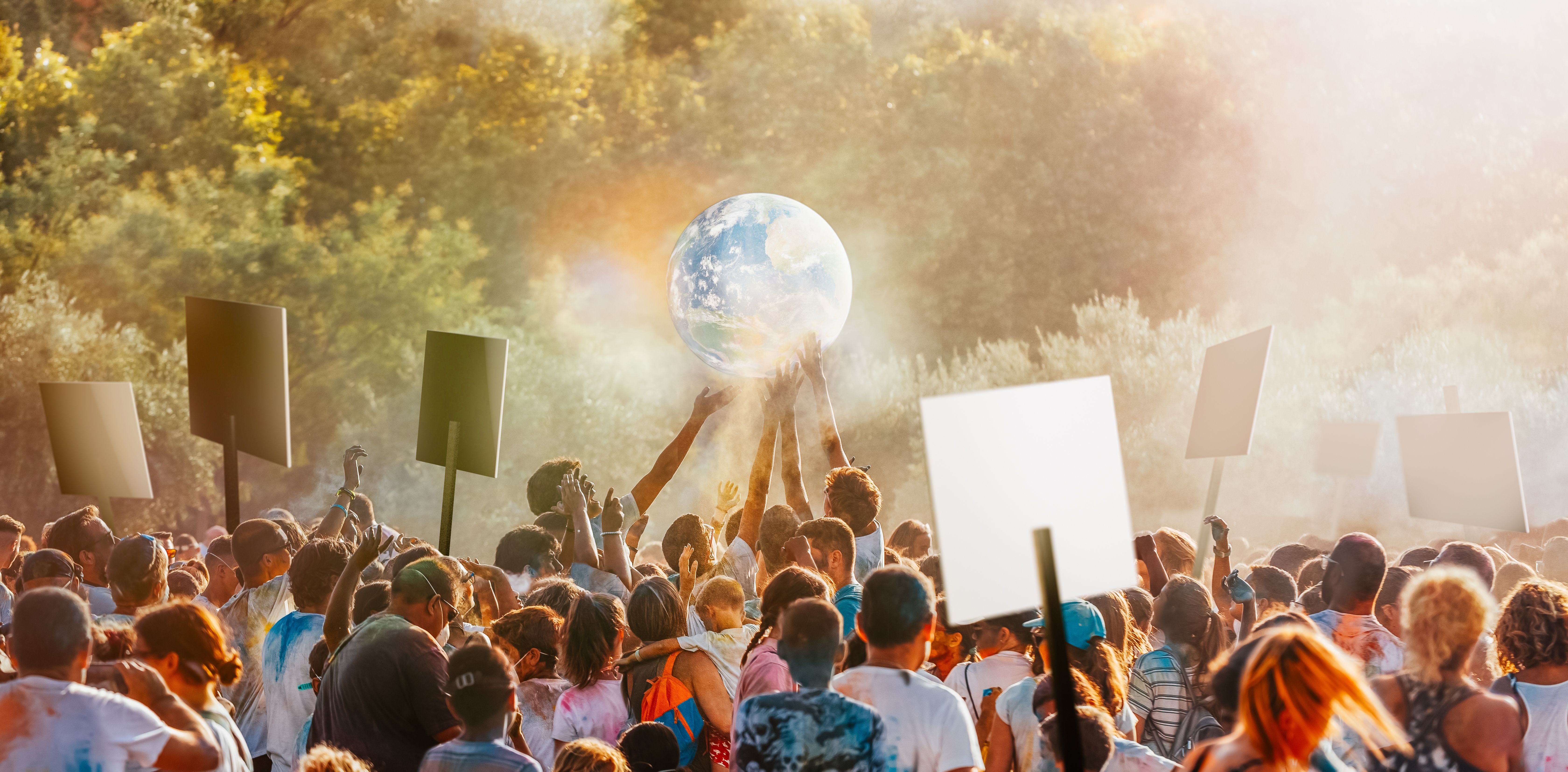According to the Cambridge Dictionary, the definition of climate crisis is: “serious problems that are being caused or likely to be caused by changes in the world's weather, in particular, the world getting warmer as a result of human activity increases the level of carbon dioxide in the atmosphere”. Almost each of those points has been discussed in previous articles about the greenhouse effect, and global warming. But here we have something a little bit different.
In this article, we’ll explore the keys to understanding what the climate crisis we’re living in is about. We’ll check out what it means, its causes and its effects. Don’t miss out on the last paragraphs: stay tuned to see if we can still win the battle against it 💪

First things first: why is this a crisis?
We define it as a crisis because we need to present it as a matter that must be addressed immediately. This isn’t just because we need to show a sense of urgency, it’s because we have to act and not only “show”: if we don’t act now, the consequences are going to be catastrophic. It’s one of the greatest challenges that we’re facing right now.
The entire world has moved from solely discussing the “greenhouse effect” to discussing the “climate crisis”. Although there was a spike in frequency in 2019, the truth is that since the 1990s, the term “greenhouse effect” has become much less frequent. “Climate change” is still the most frequently used term in, for example, mainstream media. “Climate crisis”, on the other hand, is the only term that has been increasing in use in the past two years. According to the Oxford Monitor Corpus of English—a corpus of web-based news material from 2017 to the present with more than 14 billion words—, “climate crisis” increased nearly 20-fold in the first half of 2021 in comparison with the first half of 2018 and “climate emergency” was 76% more frequent over the same period. Although “climate emergency” spiked in 2019, since the second half of 2019 “climate crisis” plays the main role.
Climate crisis facts
As you can see, the term “climate crisis” represents the urgency we have to act in order to do something about climate change and global warming. But what’s its foundation? Which are the facts that let us talk about the climate crisis instead of, for example, just climate change?
There’s a lot of carbon dioxide (CO2) in the atmosphere
By “a lot” we mean: more than at any time in human history. By the end of 2021, there was an amount of carbon dioxide that was only comparable to the amount that the Earth had more than three million years ago when the sea level was several meters higher and trees grew at the South Pole. Note that in February and March 2021 the concentration of CO2 was more than 417 parts per million (ppm), almost 100% higher than pre-industrial levels that reached 278 ppm.
1.5°C of warming? We’re just getting there and beyond
We’re on our way to exceeding the 1.5°C of warming, a temperature that was set as a goal in the Paris Agreement in 2015. Well, actually, goals was set as “below 1.5°C” of warming, so you can imagine the situation we’re in. A recent report from the Intergovernmental Panel on Climate Change (IPCC) says how difficult it is to change this scenario. Only if we achieve a scenario of low emissions, will we reduce the impact of reaching that temperature.
The truth is that even in that low-emissions scenario, we’ll experience 1.5°C of warming by the end of the 21st century. In this scenario, Earth’s temperature will reach that number between 2041 and 2060, and then go back to 1.4°C of warming before the century ends.
Can’t release more than 500 gigatonnes of carbon dioxide into the atmosphere
Between 1850 and 2019, we released around 2,390 gigatonnes of carbon dioxide into the atmosphere. In case you’re wondering how much is a gigatonne, one gigatonne is equivalent to one billion tonnes. Those CO2 emissions are mainly responsible for 1.07°C of warming. That number is the result of the comparison between Earth’s temperature at pre-industrial levels and the one we’re experiencing nowadays.
So if we want to reach the 1.5°C goal that we talked about before, we have a 50/50 chance to do so if we release no more than 500 gigatonnes of carbon dioxide into the atmosphere. Just in 2019, we released 36 gigatonnes.
More heat and extreme events
From wildfires in Australia, California and Europe to heavy rains in other parts of the world, extreme events are taking place more frequently and that’s just the beginning. Extreme heat events that would have only happened on average every ten years between 1850 and 1900, are now likely to occur 2.8 times every ten years. As we said, this is just the beginning because if we reach 1.5°C future warming, those same events are likely to happen 4.1 times every ten years.
The very same thing occurs when we look at heavy rains as 150 years ago, heavy one-day rain would have only happened once every ten years. Now, the story is different: it happens 1.3 times every ten years. And, in terms of the 1.5°C future warming, it’s likely to happen 1.5 times every ten years.
Average wildlife populations have decreased by 60% in 40 years
The biennial Living Planet Report published by the Zoological Society of London and the WWF said that the average size of vertebrate populations dropped by 60% between 1970 and 2014. Although this doesn’t mean that total animal populations have decreased by 60%, it’s still a number to be concerned about.
But if it doesn’t mean that, what does it imply? Well, it’s an average, the study compares the relative reduction of different animal populations. It mixes, for example, a population of 10 rhinos where 9 of them died with a population of 1,000 tigers where 100 of them died. The result is the average population decrease across the groups which, in this case, would be 50%.
The sea is getting higher and higher at a fast pace
It all started in 1900: since then sea levels have risen faster than they have in the last 3,000 years. And it seems that this fast pace is here to stay. The climate change that we’re experiencing causes ice sheets and glaciers to melt and a warmer ocean.
Following the 1.5°C warming goal that we talked about before, if the future temperature is limited to it, we’ll still experience a rise in the sea level that’ll be between 2 and 3 meters above the current levels. But if we exceed that goal and make it 2°C the rise will be between 2 and 6 meters above the actual levels.
A significant reduction in the Arctic sea ice
The annual Arctic sea ice achieved its lowest levels since 1850 between 2011 and 2020. What’s the main reason? Thanks to global warming and climate change, and therefore mainly thanks to human activities, temperatures in the Arctic are rising faster than anywhere else in the world. An IPCC report that showed some future emissions scenarios proved that under those scenarios, the sea ice minimum will decrease below one million km2 at least once before 2050. This means that the area will be almost free of ice altogether.
Why are we experiencing a climate crisis?
We’ve reached this point due to the well-known causes of climate change and global warming. We know that we’ve discussed them in recent articles, but we wanted to save you the trouble of looking for them outside these paragraphs. So we have collected the main reasons why we have reached this stage that makes us talk about the “climate crisis” and not just “climate change” or “global warming”.
Just a note that the order we chose to follow doesn’t necessarily indicate an order of importance. This means that, for example, the first cause isn’t the primary. Without further ado, let’s go ahead.
The first one is connected to the way we generate energy. In order to do so, we rely mainly on the burning of fossil fuels like gas and coal. That’s how we, for instance, heat our homes or cook. When we burn fossil fuels, we release greenhouse emissions into the atmosphere and therefore boost global warming. The second is connected to this one because it’s about transport. Cars, trucks, buses, ships and planes burn fossil fuels too and they all produce emissions.
Deforestation is another cause. As you may know by now, trees work as carbon storage so when we cut them we’re not only releasing CO2 into the atmosphere but also erasing one natural sink that can help us reduce the amount of carbon dioxide. So why do we continue to do this? Well, for example, farmers do that or even use fire to clear land to produce soya for animal feed.
And this leads us to the next cause: food production. Livestock that’s reared for meat and dairy products emits methane. Plus, agricultural soils generate gases such as nitrous oxide which is mainly caused by the use of fertilizers. We need to move to more conscious ways to eat because as food production increases, so will those emissions.
Another cause is related to plastics and waste. Guess what? Fossil fuels play a role here too because plastics are made from fossil fuels so we release emissions when we produce them. Around the world, 40% of plastics are used as packaging, and very little is recycled. The lack of recycling increases the emissions produced by plastics because they boost waste emissions: they release emissions when they’re burned or put into landfills.
What are the effects of this climate crisis?
Extreme weather events like heat waves have increased — for example, and 30% of Earth’s population is exposed to deadly heat waves more than 20 days a year. Droughts, floods, wildfires, winter storms, and hurricanes are also just some of the effects that we’re experiencing. We can add retreating ice and record sea levels to those effects.
But don’t worry, we’ll see how we can win this battle later.
Earth’s temperatures don’t have a limit
Since billions of tons of CO2 enter the atmosphere each year, mainly because of coal, oil, and gas production, temperatures keep on rising. Actually, the last four years were the four hottest on record, reaching, at least, a rise of one degree Celsius in comparison to pre-industrial levels. This drives us to a situation that’s extremely risky.
Why do we say that? Because of the damage that this is causing to human health and to our ecosystems. For example, glaciers and ice sheets in polar and mountain regions are melting faster than ever. In the near future, this can lead to leaving many cities that are next to coastal areas underwater.
Food and water are at stake too
Soil degradation is just one effect of climate change that has a great impact on food and water security. About 500 million people live in places affected by erosion and up to 30% of food is lost or wasted as a consequence. Besides, climate change is also affecting the availability and quality of water both for drinking and for agriculture activities. If we focus on agricultural activities, we’ll see that crops that have been successful for centuries are now fighting to survive.
We have to deal with new extremes
Disasters aren’t just like we’ve known them before. Now they’re becoming more frequent and intense mainly thanks to global warming. All continents are suffering from heat waves, droughts, typhoons, and hurricanes.
This means that all continents are dealing with mass destruction, actually, the world economy spends 520 billion USD each year because of them, and 26 million people are pushed into poverty as a consequence too. Note that 90% of disasters are classified as weather and climate-related, so there’s no doubt that climate change and global warming are behind them.
More conflicts are knocking at our door
Reductions in food and water, added to the fact that a lot more places face more frequent disasters, generates more competition for resources that are needed to live. Therefore, the temperature isn’t the only thing that’s rising: socioeconomic tensions are too. Sometimes they can even lead to mass displacements. For example, the World Bank says that if nothing changes, by 2050 more than 140 million people in Sub-Saharan Africa, Latin America, and South Asia will have to migrate within their regions.

We can still win this battle
Although we’re suffering a climate crisis, it’s not too late to reduce its impact on the future. But we really need to take action. We have to reduce our global emissions by 7.6% per year from now until at least 2030 if we want to prevent warming much beyond 1.5°C. Therefore, if we want to change things, we’ll need to harness everything ranging from transforming technology solutions to switching to a greener routine - now!.
Recently we’ve seen how human activities have an effect on global warming and climate change. But let’s now see 3 other facts that will help us guide our actions:
- Reduction in methane. Over 75% of methane emissions can be decreased just by using the technology that we have available now.
- Limiting carbon emissions is possible if we restore and conserve natural spaces. This includes both lands and oceans.
- Investing in nature-based solutions. This will help limit global warming and generate 4 trillion USD in revenue for businesses. Plus, more than 100 million jobs will be created per year by 2030.
If you’re looking for a place to start, dive deep into our blog and check out what we’re doing at Lemu. We’ll be waiting for you to join us on the journey of helping reduce the impact of this climate crisis in the future, starting today 🌱
